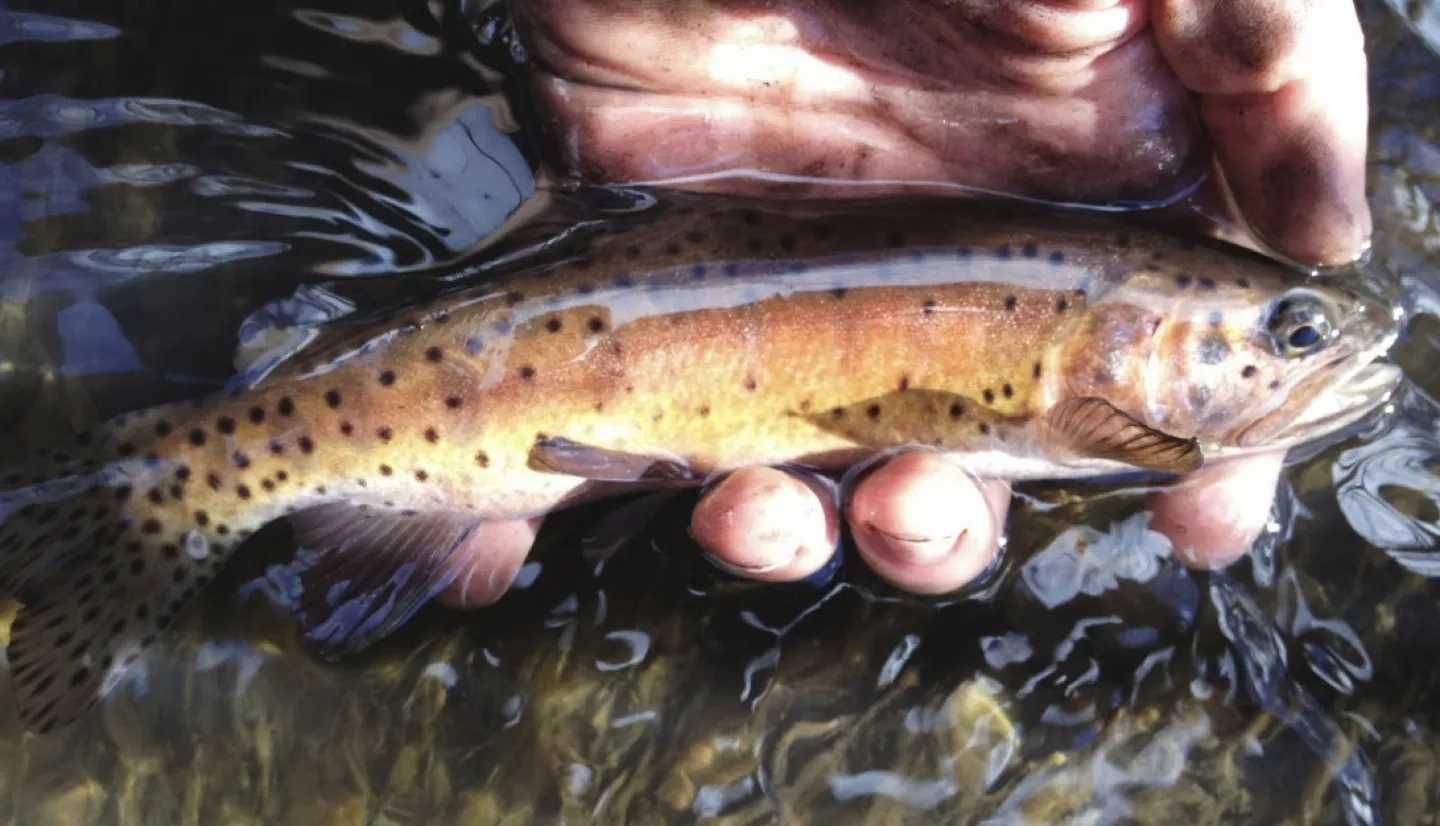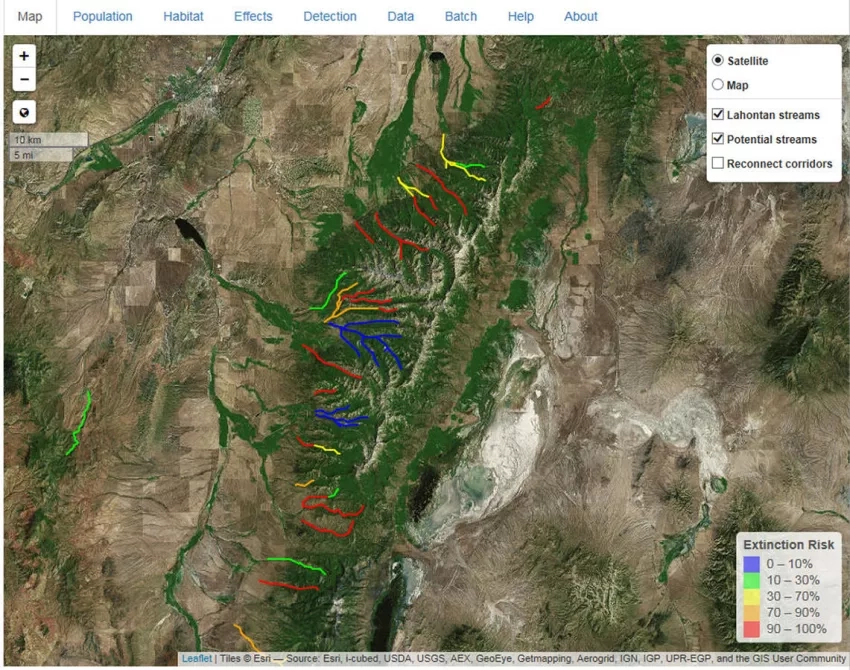A source of pride for the Sagebrush State is its state fish, the colorful Lahontan cutthroat trout. The bright pink and olive green, black-spotted fish is in the salmonid family, meaning its relatives include trout and salmon. It's a native species to the Lahontan Basin of northern Nevada, eastern California, and Oregon.
Once plentiful, the fish are now threatened. In particular, the salmonid fish of the arid West live in isolated populations scattered across a large area, which increases the threat of localized extinctions. That isolation served as inspiration for a NASA Earth Applied Sciences Ecological Forecasting project led by Wenger. Their first step: find the fish.
“Lahontan cutthroat trout is one of the most imperiled subspecies of cutthroat trout,” said Seth Wenger, co-director of science of the University of Georgia River Basin Center. “Many salmonid fishes are both economically important and threatened by past and current human activities, including dam construction, habitat degradation and climate change.”
“The good news is that we found that many of the current ‘conservation populations’ – the management priorities of federal and state agencies – are ones with low extinction probability,” Wenger said. “However, we found that a few of these populations were actually at high risk.”
Wenger was the co-principal investigator for the project with Helen Neville, senior scientist at Trout Unlimited. Their team evaluated the status of different populations across the range of the fish, developing a model called the Multiple Population Viability Analysis (MPVA). The model incorporates satellite data, aerial imagery and an environmental model to estimate factors that affect salmonid fish – such as stream flow and vegetation greenness.
Jon Sjoberg is the chief of fisheries at the Nevada Department of Wildlife and oversees the management of native trout species, including conservation and recovery for aquatic species listed under the Endangered Species Act.
“The Lahontan cutthroat trout is important not only as a high-profile sport fish species, but also as a cultural and symbolic icon,” Sjoberg said. “Conservation and recovery of these populations is a high-priority program for our department.”
Especially valuable to Sjoberg is the MPVA model’s ability to measure the extent and quality of snow cover, as well as the timing of annual snowmelt and runoff. “From the perspective of Lahontan cutthroat trout and management/conservation of them in the Great Basin, this is critical,” Sjoberg stressed. “This is one of multiple factors we need to consider in prioritizing and implementing conservation actions.”
At Trout Unlimited — a nonprofit dedicated to the conservation of freshwater streams, rivers and associated upland habitats – Neville is also using this MPVA model in her work.
“This is a valuable tool particularly at the project-level to identify potential conservation opportunities and parameters to address … The availability of MPVA will further expand our capabilities to a larger scale for Lahontan cutthroat trout recovery analysis and planning.”
–Jon Sjoberg, Nevada Department of Wildlife
Part of Neville’s job requires asking challenging conservation questions to determine what species need the most help and where. With insight from the MPVA model, she now has the data necessary to answer these questions.
“This modeling framework, and additional decision-support tools developed for exploration of model results and management scenarios, provide crucial insights and empirical justification for recovery planning and adaptive management for this threatened species,” Neville said. Using the MPVA model as its basis, Wenger and Neville’s team also developed an application tool — the Lahontan Cutthroat Population Simulator — which allows users to explore the effects of alternative management actions on different populations.
For Sjoberg’s work at the Nevada Department of Wildlife, the simulator helps bring the MPVA model’s applications down from a large geographic area to individual streams. “This is a valuable tool, particularly at the project-level, to identify potential conservation opportunities and parameters to address,” he said. “The availability of MPVA will further expand our capabilities to a larger scale for recovery analysis and planning.”
This story is part of our Space for U.S. collection. To learn how NASA data are being used in your state, please visit nasa.gov/spaceforus.





